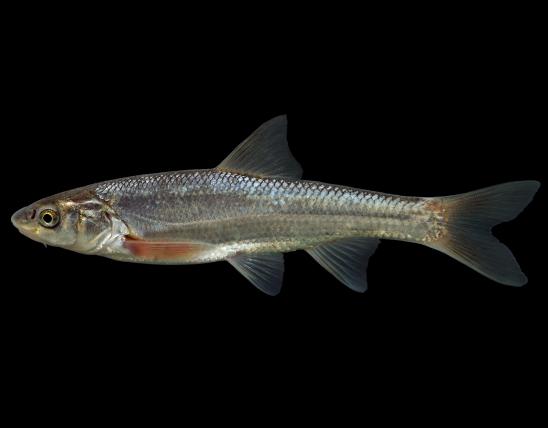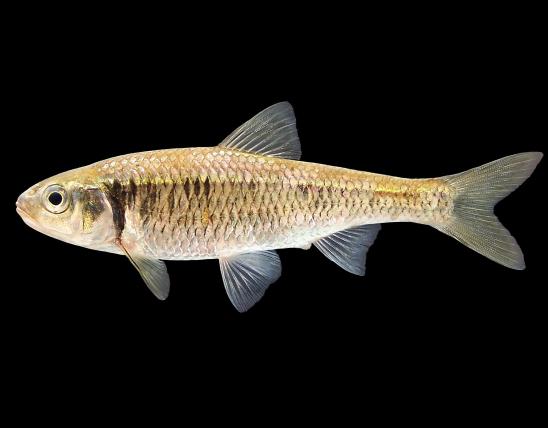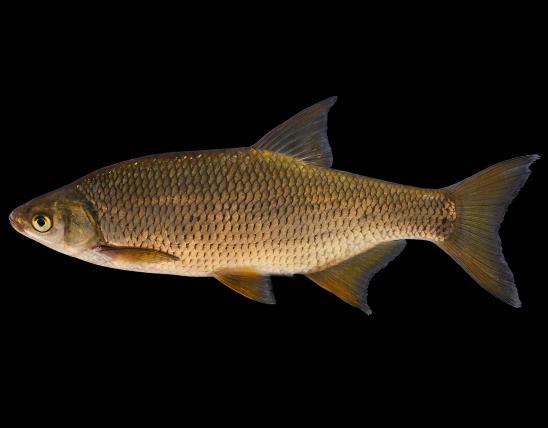
The creek chub is a slender, fine-scaled minnow with a black blotch at front of the dorsal fin and a black spot at the base of the tail fin. Dark olive back with silvery sides that have greenish or purplish reflections and a thick dusky stripe. Fins are yellowish or light olive, and the belly is silvery white.
Total length: 5 to 7 inches; maximum about 12 inches.

Nearly statewide, in its preferred habitat.
Habitat and Conservation
This is the largest minnow native to Missouri. It is well named because it is most abundant in small headwater creeks where few other fishes are present. These small streams often cease to flow in dry weather, and the creek chub survives in isolated pools or repopulates from below when the creeks start to flow again. Although it requires flowing water for spawning, it does not thrive in streams with continuous strong flow, where other fish compete more successfully.
Food
A generalized carnivore, eating mostly insects, but also small fishes, crayfish, worms, and mollusks in lesser quantities.
Status
One of the most widely distributed of our minnows. Most abundant in smaller Prairie creeks of central and east-central Missouri. Westward, it becomes increasingly spotty in distribution, but where it occurs it is often abundant. Present in nearly all the small creeks and spring branches of the Ozarks: common in its preferred habitats, but uncommon and sporadic in the White River system. In the southeast, it occurs only in small creeks draining Crowley's Ridge, where it is abundant.
Life Cycle
Individuals can live up to 8 years. In our state, spawning is from early April to late May. Males construct spawning nests during spring composed of a long, low ridge of washed gravel with an oval pit at its downstream end. They defend the nests vigorously. The intriguing nest-building and breeding habits of this minnow have been studied in detail and make for fascinating reading.
Human Connections
This hardy minnow makes an excellent bait. Because it requires flowing water and gravel for spawning, special techniques are required to propagate it artificially. This minnow rises like a trout to a fly or other small artificial lure and can provide sport when taken on light tackle.
Ecosystem Connections
Numerous other minnows also use creek chub nests when spawning.
































